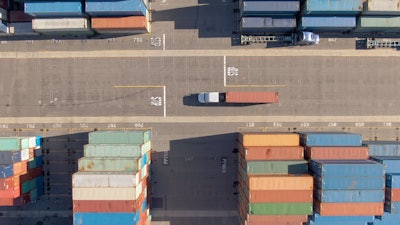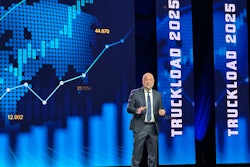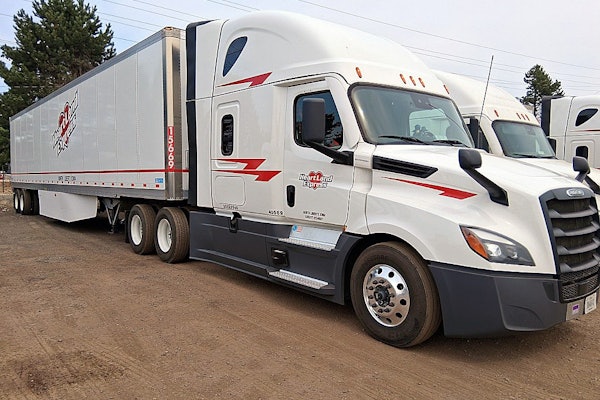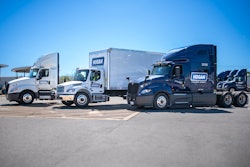
Canada is also experiencing significant growth with a 15.1% increase in import volumes in January 2025 compared to 2024.
A significant surge of imports worked their way across the U.S. north and south boarder during the first three months of the year, just ahead of a looming global trade sparked by sweeping "reciprocal tariffs" imposed Wednesday by the Trump administration on imported goods.
Trucking activity at the Port of Laredo — the busiest land port in the U.S. — jumped 48.5% year-over-year during the first three months this year, according to data collected by Motive, with last week marking the highest activity levels ever recorded. Import volume from Canada jumped 15.1% in January compared to 2024, reaching its highest level since August 2022, according to Federal Reserve Economic Data (FRED).
The latest FRED data also shows a surge in January (+9.6%) in import volume over January 2024. Hamish Woodrow, head of strategic analytics at Motive, said his firm's data suggests February and March will come in at the same level, if not higher, and the momentum could last for at least the next few weeks.
"The surge we’re seeing is driven by urgency and uncertainty. Businesses accelerated shipments in Q1 to beat the tariff clock, but that momentum doesn’t stop overnight," Woodrow said. "There’s a lag as pre-tariff orders still flow through the system, and some companies are continuing to import at elevated levels to lock in known costs before additional changes hit."
Woodrow said, too, many businesses are over-indexing on stocking inventory to build resilience.
"In volatile trade environments, certainty — even at a higher price — is better than the unknown," he said. "So while tariffs are now in effect, we anticipate that elevated volumes will continue into very early Q2, especially in sectors with limited alternatives or time-sensitive supply chains, before dropping to below normal levels later in Q2."
President Donald Trump on Wednesday – a day he'd dubbed “Liberation Day" – unfurled a 10% tariff across the globe on imported goods, with greater duties added on a country-by-country basis. China, for example, would be tagged with a 54% tariff, the European Union with 20%, India with 26% and Japan with 24%. Mexico and Canada are exempt from the new tariffs but remain subject to existing duties on auto imports, metals and other goods.
The Senate Wednesday night narrowly passed a resolution to blocking proposed tariffs on Canadian imports – a measure that is likely little more than symbolic as it's unlikely to ever make it into the House.
With tariffs now in force, Woodrow expects a sharp deceleration in cross-border activity within the next two to three weeks as more companies adopt a “wait and see posture, pulling back on imports until there’s more clarity on long-term tariff policy," he said. "It won’t be a smooth taper. It’ll be a drop followed by volatility. Until there's greater regulatory certainty, we’re not returning to traditional seasonal patterns in 2025."
In sectors like computer-related parts and machinery, Motive noted significant year-over-year growth in January over-the-road imports (up 48.6%) – a surge driven by a combination of factors: diversification away from Chinese manufacturing, booming demand fueled by AI adoption and a rush to move goods ahead of looming tariffs.
To kick off the year, computer-related parts (+48.6%), electrical machinery (+6.8%), and vehicles (+8.5%) saw the biggest year-over-year gains. While he expects these industries to fare well in early Q2, Woodrow said "we anticipate demand will slow down. We may also see movement in consumer staples and industrial goods as companies hedge against rising prices and policy unpredictability."
"Overall, the sectors bringing in the most volume now aren’t necessarily 'winners' — they’re the ones that can’t afford to wait for certainty and are choosing to absorb higher short-term costs to safeguard long-term continuity," he added.














